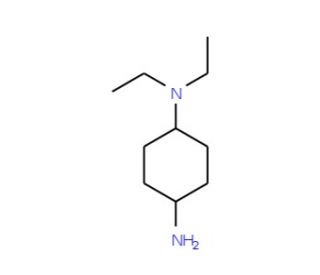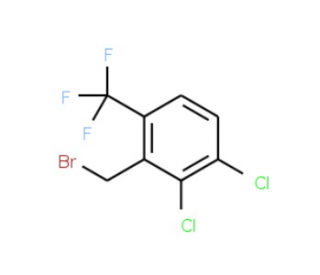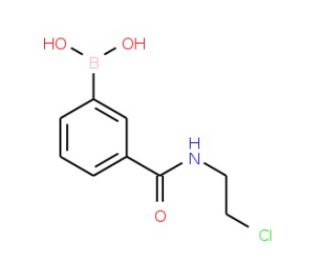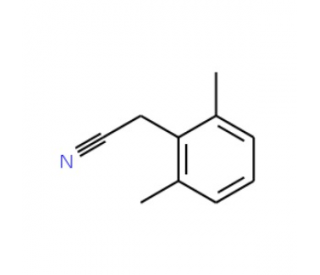详细说明
Species Reactivity
Human
Specificity
Detects human and mouse HGF R/c-MET when phosphorylated at Y1003.
Source
Polyclonal Rabbit IgG
Purification
Antigen Affinity-purified
Immunogen
Phosphopeptide containing human HGF R Y1003 site
Formulation
Lyophilized from a 0.2 μm filtered solution in PBS with Trehalose. *Small pack size (SP) is supplied as a 0.2 µm filtered solution in PBS.
Label
Unconjugated
Applications
Recommended
ConcentrationSample
Western Blot
1 µg/mL
See below
Immunohistochemistry
5-15 µg/mL
Immersion fixed paraffin-embedded sections of human breast cancer tissue
Immunocytochemistry
5-15 µg/mL
See below
Please Note: Optimal dilutions should be determined by each laboratory for each application. are available in the Technical Information section on our website.
Data Examples
Western Blot | Detection of Human Phospho-HGF R/c-MET (Y1003) by Western Blot. Western blot shows lysates of A431 human epithelial carcinoma cell line untreated (-) or treated (+) with 100 μM pervanadate (PV) for 10 minutes. PVDF membrane was probed with 1 µg/mL of Rabbit Anti-Human Phospho-HGF R/c-MET (Y1003) Antigen Affinity-purified Polyclonal Antibody (Catalog # AF4059), followed by HRP-conjugated Anti-Rabbit IgG Secondary Antibody (Catalog # ). A specific band was detected for Phospho-HGF R/ c-MET (Y1003) at approximately 140 kDa (as indicated). This experiment was conducted under reducing conditions and using . |
Immunocytochemistry | Phospho-HGF R/c-MET (Y1003) in A431 Human Cell Line. HGF R/c‑MET phosphorylated at Y1003 was detected in immersion fixed A431 human epithelial carcinoma cell line untreated (lower panel) or treated (upper panel) with pervanadate using Rabbit Anti-Human Phospho-HGF R/c‑MET (Y1003) Antigen Affinity-purified Polyclonal Antibody (Catalog # AF4059) at 10 µg/mL for 3 hours at room temperature. Cells were stained using the NorthernLights™ 557-conjugated Anti-Rabbit IgG Secondary Antibody (red; Catalog # ) and counterstained with DAPI (blue). View our protocol for . |
Preparation and Storage
Reconstitution
Reconstitute at 0.2 mg/mL in sterile PBS.
Shipping
The product is shipped at ambient temperature. Upon receipt, store it immediately at the temperature recommended below. *Small pack size (SP) is shipped with polar packs. Upon receipt, store it immediately at -20 to -70 °C
Stability & Storage
Use a manual defrost freezer and avoid repeated freeze-thaw cycles.
12 months from date of receipt, -20 to -70 °C as supplied.
1 month, 2 to 8 °C under sterile conditions after reconstitution.
6 months, -20 to -70 °C under sterile conditions after reconstitution.
Background: HGF R/c-MET
HGF R, also known as Met (from N-methyl-N’-nitro-N-nitrosoguanidine induced), is a glycosylated receptor tyrosine kinase that plays a central role in epithelial morphogenesis and cancer development. HGF R is synthesized as a single chain precursor which undergoes cotranslational proteolytic cleavage. This generates a mature HGF R that is a disulfide-linked dimer composed of a 50 kDa extracellular alpha chain and a 145 kDa transmembrane beta chain (1, 2). The extracellular domain (ECD) contains a seven bladed beta -propeller sema domain, a cysteine-rich PSI/MRS, and four Ig-like E-set domains, while the cytoplasmic region includes the tyrosine kinase domain (3, 4). Proteolysis and alternate splicing generate additional forms of human HGF R which either lack of the kinase domain, consist of secreted extracellular domains, or are deficient in proteolytic separation of the alpha and beta chains (5 - 7). The sema domain, which is formed by both the alpha and beta chains of HGF R, mediates both ligand binding and receptor dimerization (3, 8). Ligand-induced tyrosine phosphorylation in the cytoplasmic region activates the kinase domain and provides docking sites for multiple SH2-containing molecules (9, 10). HGF stimulation induces HGF R downregulation via internalization and proteasome-dependent degradation (11). In the absence of ligand, HGF R forms noncovalent complexes with a variety of membrane proteins including CD44v6, CD151, EGF R, Fas, Integrin alpha 6/ beta 4, Plexins B1, 2, 3, and MSP R/Ron (12 - 19). Ligation of one complex component triggers activation of the other, followed by cooperative signaling effects (12 - 19). Formation of some of these heteromeric complexes is a requirement for epithelial cell morphogenesis and tumor cell invasion (12, 16, 17). Paracrine induction of epithelial cell scattering and branching tubulogenesis results from the stimulation of HGF R on undifferentiated epithelium by HGF released from neighboring mesenchymal cells (20). Genetic polymorphisms, chromosomal translocation, overexpression, and additional splicing and proteolytic cleavage of HGF R have been described in a wide range of cancers (1). Within the ECD, human HGF R shares 86% - 88% aa sequence identity with canine, mouse, and rat HGF R.
References:
Birchmeier, C. et al. (2003) Nat. Rev. Mol. Cell Biol. 4:915.
Corso, S. et al. (2005) Trends Mol. Med. 11:284.
Gherardi, E. et al. (2003) Proc. Natl. Acad. Sci. 100:12039.
Park, M. et al. (1987) Proc. Natl. Acad. Sci. 84:6379.
Crepaldi, T. et al. (1994) J. Biol. Chem. 269:1750.
Prat, M. et al. (1991) Mol. Cell. Biol. 12:5954.
Rodrigues, G.A. et al. (1991) Mol. Cell. Biol. 11:2962.
Kong-Beltran, M. et al. (2004) Cancer Cell 6:75.
Naldini, L. et al. (1991) Mol. Cell. Biol. 11:1793.
Ponzetto, C. et al. (1994) Cell 77:261.
Jeffers, M. et al. (1997) Mol. Cell. Biol. 17:799.
Orian-Rousseau, V. et al. (2002) Genes Dev. 16:3074.
Klosek, S.K. et al. (2005) Biochem. Biophys. Res. Commun. 336:408.
Jo, M. et al. (2000) J. Biol. Chem. 275:8806.
Wang, X. et al. (2002) Mol. Cell 9:411.
Trusolino, L. et al. (2001) Cell 107:643.
Giordano, S. et al. (2002) Nat. Cell Biol. 4:720.
Conrotto, P. et al. (2004) Oncogene 23:5131.
Follenzi, A. et al. (2000) Oncogene 19:3041.
Sonnenberg, E. et al. (1993) J. Cell Biol. 123:223.
Long Name:
Hepatocyte Growth Factor Receptor
Entrez Gene IDs:
4233 (Human); 17295 (Mouse)
Alternate Names:
AUTS9; cMET; c-MET; EC 2.7.10; EC 2.7.10.1; hepatocyte growth factor receptor; HGF R; HGF receptor; HGF/SF receptor; HGFR; Met (c-Met); met proto-oncogene (hepatocyte growth factor receptor); met proto-oncogene tyrosine kinase; MET; oncogene MET; Proto-oncogene c-Met; RCCP2; Scatter factor receptor; SF receptor; Tyrosine-protein kinase Met











 粤公网安备44196802000105号
粤公网安备44196802000105号